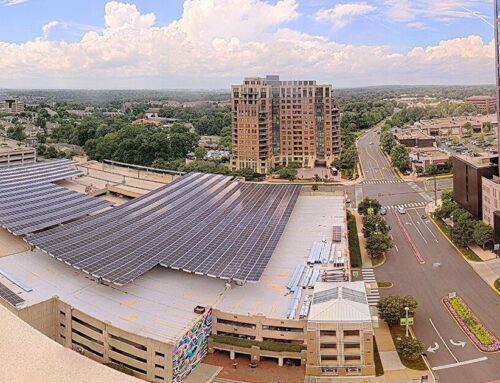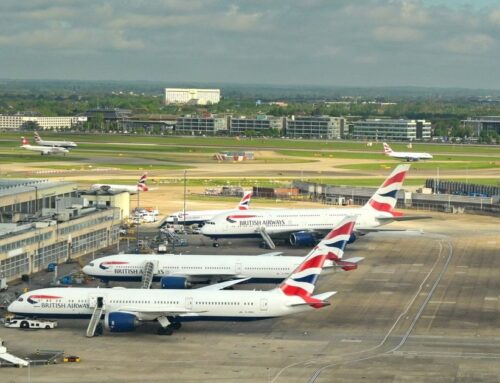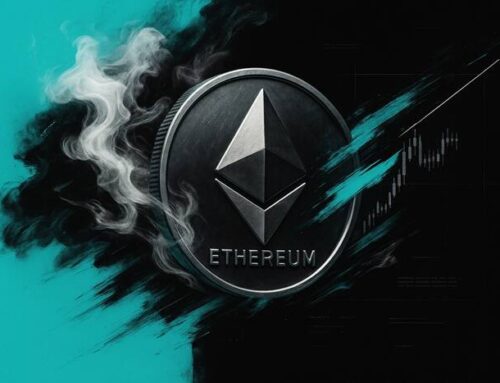Drones Detecting and Sealing Greenhouse Gas Leaks
January 2, 2025
Drones are offering safer, faster and more accurate solutions to detect methane and other harmful greenhouse gases. With advancements in sensor technology and AI, drones can lead the charge in transforming emissions monitoring across industries.
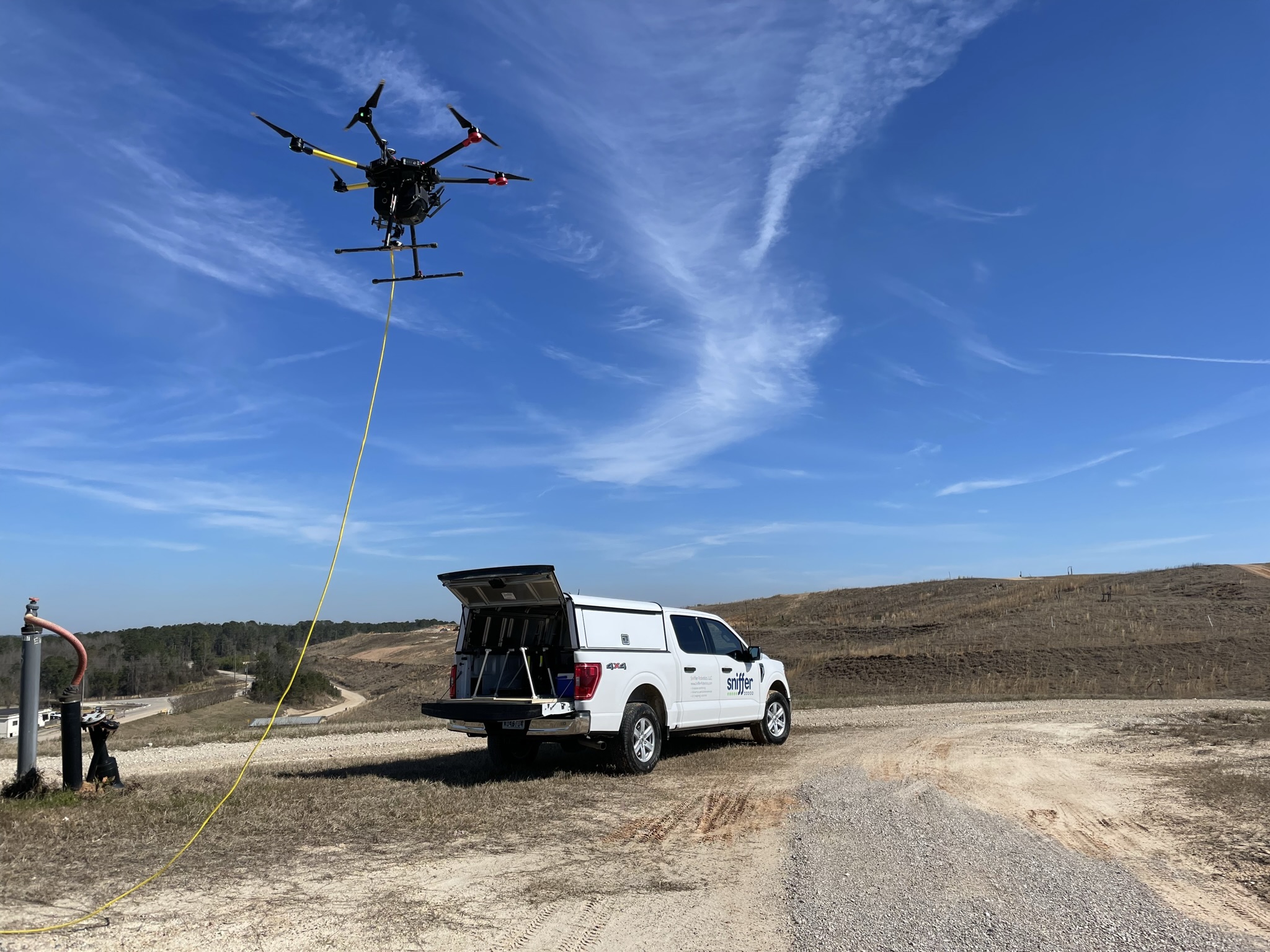
Leon Shivamber, CEO of Sebastian, Florida based Viper Drones and My Drone Services, is on a mission. He and his partners want the world to adopt gas leak detection using drones—so much so that Viper Drones has become a consulting company that does not charge for its expert advice. Any money they earn comes from commissions on purchases made through their site.
At the start, when the group of nearly retired high-level executives came together to discuss new challenges, they were drawn to the problem of methane and CO2 emissions and the possibility of using drones to help solve the problem. Shivamber said, “we got interested in building a company that would help in this space doing greenhouse gas emission inspections with drones. We wanted people to know right now that the solution existed.”
Today, Viper partners use their collective experience to help clients choose drones, solutions and services.
THE WORLD IS GETTING LEAKIER
Shivamber’s sense of urgency is not misplaced. Over the past several years, fire, floods and hurricanes have made it apparent that global warming and climate change are here.
At the same time, the role of CO2, methane and other greenhouse gases as culprits has become known outside the technical world, as offenders ranging from agriculture, to landfills, oil fields and leaky pipelines continue to emit.
Today, both the overall gas detection market and the drone-based part of it are surging.
The overall global gas detection market, including drone-based activity, according to research firm Grand View Research was valued at $4.73 billion in 2022 and is projected to reach $10.66 billion by 2030. The drone-based share of that market was valued at $4.0 billion in the oil and gas industry in 2023 and is expected to grow at a rate of of 6.1% from 2024 to 2034.
While most emissions include methane, CO2, and other greenhouse gases, European Commission research findings show methane to be the strongest pollutant with 83 times the global warming potential of CO2.
As threatening as emissions are to the climate, leaks are also an economic loss. Methane is the primary component of natural gas. Research by the Clean Air Task Force shows the oil and gas industry loses about 82 million tons of methane from incomplete flaring, venting and fugitive emissions, while about 18% of total leaked emissions from the sector are from transmission and storage pipelines.
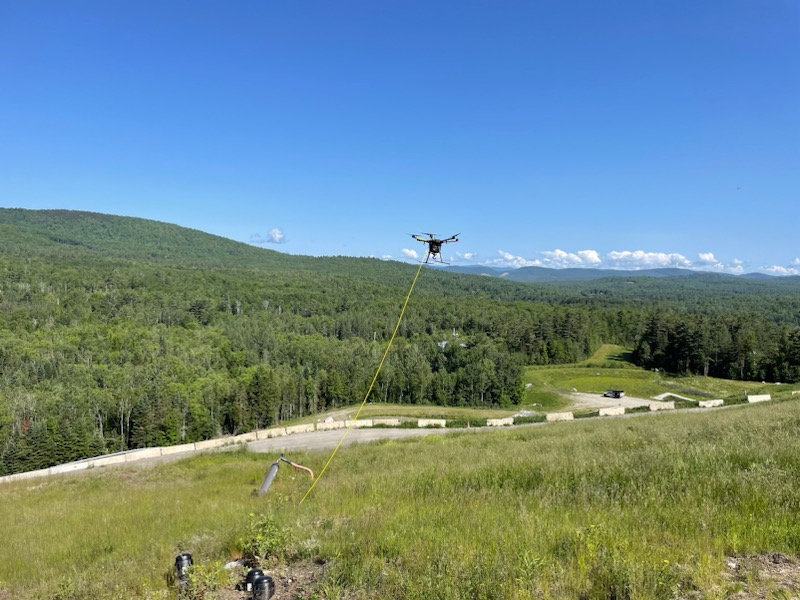
GREENHOUSE GAS SOURCES
Major sources of greenhouse gases such as methane and CO2 are landfills, agriculture, oil and gas fields and pipelines, in that order.
Agricultural methane emissions stem from ruminant animal digestive processes, manure management, and certain crops, such as rice. Flooded rice paddies allow methane-producing microbes to thrive. Rice, in fact, accounts for about 8% of human caused methane emissions, according to the United Nations Environment Programme.
Landfills create greenhouse gases as organic waste in the landfills decomposes. Landfill owners can mitigate emissions through methods such as enclosed flares and gas turbines. When used as energy recovery devices, combustion engines can destroy a significant number of emissions. For any of these to work effectively, however, regular monitoring is required to locate and repair emissions where they occur.
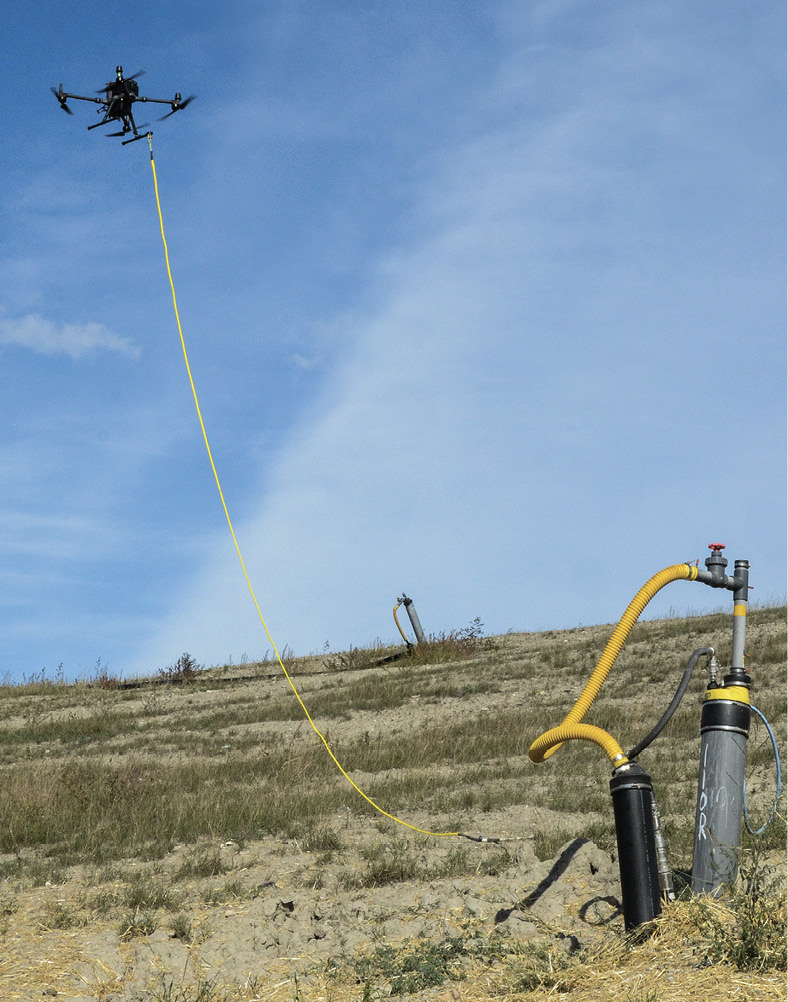
LEGISLATION
In 2022, the Inflation Reduction Act invested $369 in emissions monitoring, expecting emissions to be reduced by close to 40% by 2030. It also included the Methane Emissions Reduction Program which imposes a fee on oil and gas companies that emit methane. This is more stringent than the Clean Air Act passed more than a decade ago and the Resource Conservation and Recovery Acts previously enacted as well.
This, of course, puts even more pressure on emitters to minimize leaks.
Before leaks and emissions can be fixed, however, they first have to be detected. Laborious and dangerous practices are often in play as people attempt inspections by climbing on dangerous equipment or walking over hazardous landfills.
DRONES TO THE RESCUE
This is where drones come in. Drones can fly closer to equipment, often only five or so feet over the ground, pinpointing leaks more precisely than other methods. They can also cover a wider area, up to 150 acres in a day. They are economical and safe and they can perform frequent sweeps so leaks are identified shortly after they appear. This is significant because some manual methods are so intensive that some areas may be inspected as infrequently as once a year. At the other end of the spectrum, personnel would need to repeatedly revisit the same locations on foot. Drone software packages also can provide real time data that wasn’t available before.
Here are a few representative drone companies working in the emissions space today.
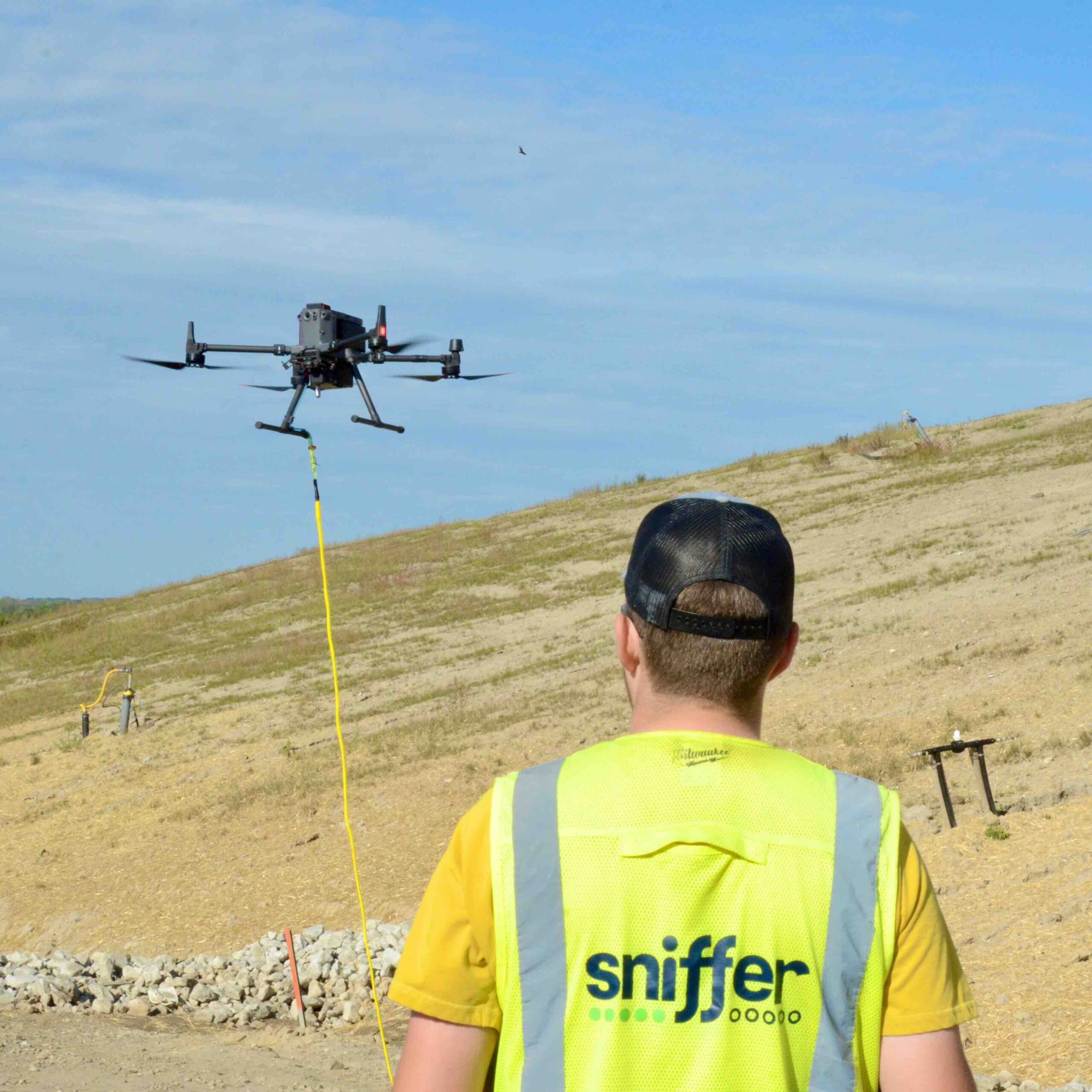
SNIFFER ROBOTICS
Bill Tennant, the CEO of Ann Arbor, Michigan, based Sniffer Robotics, remembered that when he did work installing solar panels, he found himself doing an installation on a landfill. “I saw someone walking around with a gas analyzer, then half an hour later walk by again. I asked him what he was doing, and he said, ‘I’m doing surface emission monitors.’ At that moment I decided I wanted to find a way to automate surface emissions, so people aren’t out walking on landfills. And that’s what I’ve been doing ever since,” he said.
“We’re providing a lot of benefits to our clients both on the compliance side and through studies, and allowing our clients to collect more gas for renewable energy projects where they can collect more revenue.”
Sniffer as a company was founded in 2017 and in December of 2022 the Environmental Protection Agency (EPA) approved OTM-51, which approved the company’s method for quarterly surface emissions monitoring as the only drone-based alternative to manual SEM. Tennant said a lot of their work, in addition to landfills, has been in the dairy industry.
The company’s patented SnifferDRONE replaces manual surface emissions monitoring as it collects land-based emissions data over large areas. The integrated system includes a gas detector specific to methane or hydrogen sulfide, as well as a flexible hose, weighted nozzle and break away coupling, together called the “hozzle” system. They also employ a laser guided system to enable terrain hugging capability and use software for flight planning, flight control, with in-flight reporting algorithms automating leak source detection.
While the drone is flying, air samples from the ground are pumped into the nozzle system. The samples are pumped to the onboard detector, which measures the methane concentration and reports leak locations with GPS coordinates. The system has a 90% accuracy rate, according to company analysis. Data is pushed to the cloud for processing, which is then pulled by the Sniffer Field Ops mobile app so field technicians can quickly inspect and repair the location.
Sniffer’s payload is UAS platform agnostic, and they plan to have a hardware package with their own controller and software that they will license out to partners to use on any drone they want. “They send us the data and we process using our GIS and geospatial techniques,” Tennant said.
SEEKOPS
Another company in the drone/emissions space is Austin, Texas, based SeekOps, which offers the SeekIR drone-based solution for detection, localization and quantification. The drone agnostic system includes their proprietary miniaturized methane sensor, a software suite, custom algorithms and a ground control station that emits real-time data. Execution can be manual or autonomous.
TOTALENERGIES
Oil and gas companies also develop their own drone-based emission detector systems.
Courbevoie, France, based TotalEnergies is a global multi-energy company that produces and markets oil, natural gas, biofuels, renewables and electricity. In 2022, they launched a worldwide drone-based emissions detection campaign across all their oil and gas operated sites.
The company developed its own Airborne Ultralight Spectrometer for Environmental Applications (AUSEA) system, which includes a drone mounted miniature dual sensor that can both detect emissions and identify the source. The system has been tested in Nigeria, Italy, the Republic of the Congo and the Netherlands.
“TotalEnergies is committed to moving toward Zero Methane,” said Namita Shah, President, OneTech of TotalEnergies according to a statement. “AUSEA will help us to refine our emissions calculations, and to take stronger measures to reduce our emissions even further in order to achieve the targets we have set.” Autonomous operations for the system, increasing the frequency of emission measurements, is being developed.
FLOGISTIX
Flogistix, of Oklahoma City, Oklahoma, offers methane leak detection using drone technology through the Flogistix AirMethane program. This combines their fixed wing drone, developed by subsidiary company Commaris, with advanced laser technology, high resolution visual sensors and their multi-gas detection 4Dv2 sniffer. The sniffer uses different warning lights for different types of gases, including methane H2S, VOCs and hydrocarbons. It has built in cellular connectivity that captures geo-referenced and time-stamped gas and particle concentrations. It can sense up to nine gases and particle concentrations at one time and can operate from 70 to 122 degrees F, and in light rain.
Their U-10 laser is a methane detector that uses lasers to identify leaks. It can measure the size of a plume in feet and parts per million (ppm), detect methane 5 to 50,000 ppm from 300 feet away, identify a specific natural gas waste source and can operate automatically or manually. Their Leak Detection and Repair (LDAR) program combines technology with inspection protocols.
MODEC AND JGC
In 2023, Tokyo based Modec and JGC Corporation combined to carry out a project to measure and quantify emissions of methane and other greenhouse gases from floating production, storage and offloading systems off the coast of Brazil. Emissions of methane, nitrous oxide and hydrofluorocarbons were measured in two ways: by handheld sensors and by flying drones around the floating platforms. They concluded that a hybrid combination of both approaches enabled quantification of emissions with greater accuracy than conventional desktop calculations using common emission factors.
The use of drones in methane detection will continue to grow with advances in sensor technology. AI and machine learning algorithms that can analyze historical data to predict emission patterns are expected to become increasingly precise. At the same time, there are challenges to be overcome including restrictions on beyond visual line of sight flight, battery life, privacy concerns and data integration.
Search
RECENT PRESS RELEASES
Related Post
